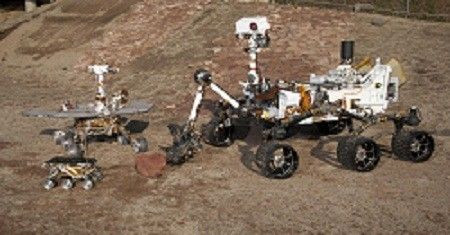NASA is One Flight Closer to Mars Launching with Orion Test, New Project Explained

The Earth's next best target is Mars and NASA is working on getting their way to it. According to latest information, NASA's exploration roadmap aims at sending people to Mars by 2030. The agency's Orion deep space capsule launched last December 5 as the maiden voyage paving for a possibly for a new future habitat.
NASA wants to take off Earth and travel to Mars flawlessly around 2030. According to NASA's associate administrator for the Human Exploration and Operations Directorate Bill Gerstenmaier (via Universe Today): "The first look looks really good from a data standpoint and will help us as we go forward."
"We, as a species, are meant to press humanity further into the solar system and this is a first step. What a tremendous team effort." The NASA official said during a post Orion landing media briefing held at Kennedy Space Center (KSC).
The test flight Orion propelled through the atmosphere running at 2,000 mph. It slowed down while deploying red and white parachutes just like peppermint swirls before landing into the Pacific Ocean according to World Mag. The spacecraft slowed down to a subtle 20 mph, 600 miles before hitting the water. The flight lasted for four and a half hours orbiting the Earth twice.
The Orion test flight came with a United Launch Alliance Delta IV Heavy rocket at 242 foot tall. It is considered currently as the most powerful booster in the world. The space test flight launched at 7:05 am EST. NASA released the flight via the Space Launch Complex 37 (SLC-37) situated at the Cape Canaveral Air Force Station in Florida.
NASA's deputy associate administrator for Exploration Systems Development, Bill Hill, addded: "This is just the first of what will be a long line of exploration missions beyond low-Earth orbit, and in a few years we will be sending our astronauts to destinations humans have never experienced."
Orion's test flight was conducted in light of the riskiest conditions anticipated when launching manned missions in deep space. These include traveling through high radiation areas like the Van Allen belts and enduring temperatures going up as high as 4,000 degrees Fahrenheit. Extreme temperatures are expected when entering the Earth's atmosphere once more. According to World Mag, the test flight allowed NASA to test critical conditions related to safety allowing the agency to gather real-life data.
It also provided a good insight on what protective gear and other configurations must be included once flights are boarded with passengers.





















